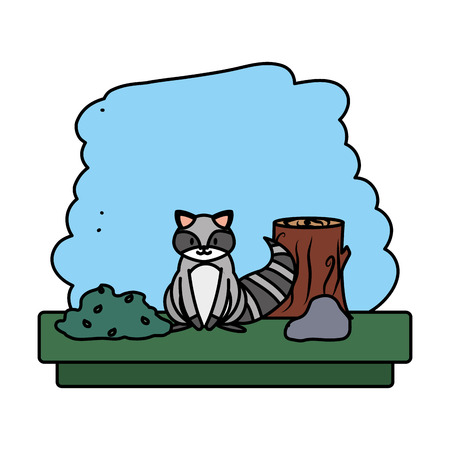1. Understanding Multi-Cat Dynamics
If you share your home with more than one cat, you already know: life with multiple felines is never boring! But did you know that how cats interact with each other can totally change the way they play? To pick the best toys for your furry crew, it helps to understand their social habits and what makes them tick as a group.
Common Behaviors in Multi-Cat Households
Cats are complex creatures, and their personalities really shine when they have feline friends around. Here are some behaviors you might notice:
| Behavior | What It Means | Toy Recommendations |
|---|---|---|
| Chasing & Pouncing | Playful competition or hunting practice, often seen during group play sessions | Interactive wand toys, rolling balls, track toys |
| Sharing vs. Guarding | Some cats love to share; others guard favorite toys or spots | Multiple identical toys, toys that can be divided (like tunnels) |
| Taking Turns | Cats may wait patiently or swap roles when playing together | Multi-piece sets, puzzle toys with several access points |
| Group Play vs. Solo Play | Some cats thrive on group action, others prefer solo time even in a crowd | Toys for both independent and group play—think cat trees, feather teasers, and solo treat dispensers |
Social Dynamics: Friends, Rivals & Roommates
No two multi-cat homes are exactly alike. Some cats become best buddies and play together all day; others just tolerate each other’s presence. The key is knowing your crew’s vibe:
- The Social Butterflies: Love interactive toys and group play sessions.
- The Lone Wolves: Prefer solo activities but might join in if the mood strikes.
- The Peacekeepers: Keep things calm and help new cats fit in by sharing space—and sometimes toys.
- The Boss Cats: May try to “own” certain toys or zones. They need options so everyone gets a turn!
The Unique Needs of Multi-Cat Households
Cats living together need mental stimulation, exercise, and enrichment—just like single kitties—but with a twist. Toys that encourage teamwork, safe competition, or simultaneous play are winners here. Plus, having enough variety prevents boredom and cuts down on squabbles over favorites.
Why Some Toys Work Better for Multiple Cats
Certain toys just make sense when you’ve got more than one cat sharing space. Here’s why:
- Larger or multi-access toys: Let several cats join the fun without crowding.
- Toys that move unpredictably: Spark interest from multiple directions at once.
- Puzzle feeders with many openings: Allow more than one kitty to snack and solve at the same time.
- Sturdy designs: Stand up to tug-of-war or tag-team pouncing.
- Tunnels and climbers: Offer escape routes and hiding spots when play gets too wild.
2. Key Features to Look for in Multi-Cat Toys
When you have more than one cat at home, picking the right toys can make a world of difference. The best multi-cat toys aren’t just about fun—they also help keep the peace and encourage positive playtime. Here’s what to look for:
Durability: Built to Last
Cats love to pounce, claw, and wrestle—especially when they’re competing for the same toy. That’s why durability is key. Choose toys made with strong materials like reinforced fabric, sturdy plastic, or natural sisal. These hold up better against rough play and last longer, so your cats won’t get bored with broken toys.
Interactive Elements: Keep Every Cat Engaged
The best toys for multi-cat households are interactive. Think tunnels that multiple cats can race through, puzzle feeders that encourage teamwork (or friendly rivalry!), or trackball toys where everyone gets a turn swatting at the ball. Interactive toys help channel your cats’ energy in a positive way and reduce boredom-driven mischief.
Safety: No Small Parts or Sharp Edges
Safety is always top priority. Look for toys that don’t have small pieces that could be swallowed or sharp edges that could hurt your cats. High-quality stitching and securely attached features—like feathers or bells—are important for keeping playtime safe.
Ability to Entertain Multiple Cats
A great multi-cat toy has enough space or features so several cats can use it at once. This helps prevent squabbles over whose turn it is! Toys like large scratching posts with multiple platforms, extra-long wands, or big catnip mats are all designed with group play in mind.
Comparison Table: Must-Have Features for Multi-Cat Toys
| Feature | Why It Matters | Examples |
|---|---|---|
| Durability | Stands up to rough, shared play | Sisal-wrapped posts, tough fabric mice |
| Interactive Design | Keeps multiple cats engaged together | Tunnel systems, puzzle feeders |
| Safety | Avoids choking hazards and injuries | No loose parts, no sharp edges |
| Multi-Cat Capacity | Prevents fights over turns or space | Large scratchers, group teaser wands |
By focusing on these key features, you’ll set your home up for happier—and more harmonious—cat play sessions.

3. Top Interactive Toys for Group Play
When you have more than one cat at home, playtime becomes a social event. The right interactive and electronic toys can turn your living room into a feline playground, giving your cats the chance to bond, cooperate, and even enjoy a bit of healthy rivalry. Here’s a look at some of the best group-friendly toys that will keep your kitties entertained and engaged together.
Why Choose Interactive Toys for Multiple Cats?
Cats are natural hunters and curious explorers—especially when they see their siblings getting in on the action. Multi-cat households benefit from toys that encourage teamwork and challenge each cat’s instincts while minimizing boredom or jealousy. Interactive toys help prevent fights over resources, burn off extra energy, and build trust among your furry family members.
Best Group Play Toys for Multi-Cat Homes
| Toy Name | Type | Group Play Benefits |
|---|---|---|
| Automatic Laser Towers | Electronic | Random moving beams spark group chases, letting multiple cats stalk, pounce, and race together. |
| Interactive Ball Circuits | Manual/Electronic | Circular tracks with rolling balls promote cooperative play as cats bat the ball back and forth. |
| Motion-Activated Feather Wands | Electronic | Feathers pop up at random spots, encouraging cats to take turns or team up during the hunt. |
| Treat Puzzle Boards | Puzzle/Electronic | Cats work side by side to unlock treats, promoting patience and reducing food aggression. |
| Cat Tunnels with Peek Holes | Manual | Cats chase each other through tunnels and play hide-and-seek, building confidence and social skills. |
Tips for Successful Group Play Sessions
- Rotate toys regularly: Keep things fresh by switching out toys every few days.
- Add variety: Mix electronic gadgets with classic manual toys to satisfy different personalities.
- Supervise first sessions: Watch how your cats interact with new toys and guide them if needed.
- Praise cooperation: Reward group play with treats or affection to reinforce positive behavior.
The Bottom Line on Group Play Toys
The best interactive toys make playtime fun for everyone—reducing squabbles, boosting confidence, and keeping your multi-cat household happy. Whether your crew loves chasing lasers or solving treat puzzles together, these toys are designed to bring out the best in every feline friendship.
4. Best Solo-Shared Play Options
When you have more than one cat at home, it’s important to pick toys that encourage both solo and group play. These toys help keep every kitty entertained, even if their play styles are different. Here’s a look at some of the best multi-cat toys that your cats can enjoy alone or together, making them ideal for households with multiple felines.
Tunnels: Hide, Seek, and Chase
Cat tunnels are a classic favorite in American cat homes. They offer a cozy space for solo lounging and double as an exciting playground when two or more cats want to chase each other or play hide-and-seek. Tunnels with crinkly material or peek-a-boo holes add extra stimulation and fun.
Why Tunnels Work Well
- Encourage natural stalking and pouncing habits
- Allow simultaneous play—one cat can hide while another waits outside
- Easy to fold and store when not in use
Climbing Trees & Cat Condos: Vertical Fun for All
Multi-level cat trees or condos are more than just scratching posts—they’re adventure zones! Cats love to climb, perch, and nap on different levels, giving everyone their own space while still sharing the same structure. Many models include hanging toys or hammocks for added interest.
Main Benefits of Climbing Trees
- Support climbing and jumping instincts
- Offer multiple platforms for solo or shared lounging
- Help reduce territorial disputes by providing separate spots
Puzzle Feeders: Brainy Play with Room for More
Puzzle feeders challenge your cats’ minds while offering tasty rewards. Some designs are big enough for several cats to use at once, turning snack time into a friendly competition. Look for durable options that are easy to clean—American pet parents appreciate convenience!
Top Features of Puzzle Feeders
- Encourage slower eating and problem-solving skills
- Minimize boredom during the day
- Some models have multiple compartments for group play
Quick Comparison Table: Multi-Cat Solo-Shared Toys
| Toy Type | Best For Solo Play? | Fun for Multiple Cats? | Extra Perks |
|---|---|---|---|
| Tunnel | Yes | Yes | Easily portable, interactive sound effects |
| Climbing Tree/Condo | Yes | Yes | Offers exercise, reduces boredom, many levels |
| Puzzle Feeder | Yes | Yes (with larger designs) | Mental stimulation, helps control portions |
No matter which option you choose, these toys can help your cats play together—or apart—while staying active and happy in your home.
5. Safety and Space Considerations
Keeping Playtime Safe for Every Cat
When you have more than one cat, safety and harmony are just as important as fun. Multi-cat households need a bit of planning to make sure toys don’t cause squabbles or accidents. Here’s how you can set up your home for worry-free play:
Smart Toy Placement
- Spread Out the Fun: Place toys in different areas around your home instead of clustering them all in one spot. This helps prevent crowding and reduces the chances of cats competing over a single toy.
- Avoid Tight Corners: Keep toys away from cramped spaces where a cat might feel trapped or unable to escape if things get too rowdy.
- Watch for Hazards: Make sure toys aren’t near breakables, cords, or anything that could topple over during energetic play sessions.
Room Layout Tips
| Area | What to Include | Why It Matters |
|---|---|---|
| Living Room | Tunnels, interactive toys, soft mats | Central space for group play and lounging |
| Bedroom Corners | Solo toys, plush mice, balls | Good for shy or independent cats needing alone time |
| Window Sills | Suction cup track toys, hanging teasers | Cats love watching the world go by while playing solo or together |
| Hallways/Entryways | Kicker toys, motion-activated balls | Narrow but active zones great for chase games |
Toy Rotation & Introduction Strategies
- Mix it Up: Rotate toys every few days so they always feel “new.” Store unused toys out of sight—this keeps curiosity high and prevents boredom.
- Slow Introductions: When adding new toys, start with just one at a time so cats can check it out without feeling overwhelmed.
- Avoid Overcrowding: Too many toys in one place can spark territorial issues. A good rule of thumb is one main toy per cat per room, plus a few extras for sharing.
- Monitor Interactions: Keep an eye on your cats’ body language when they’re playing with new or shared toys. If you spot tension, give each cat their own toy in separate areas.
Quick Reference: Preventing Toy Troubles
| Trouble Sign | What To Do |
|---|---|
| Cats hissing over a toy | Add another identical toy in a different spot; separate them briefly if needed. |
| Avoiding certain rooms/toys | Move toys to more open or neutral territory; try different types of toys. |
| Toy hoarding by one cat | Offer similar toys in multiple locations; use treat-dispensing toys to encourage sharing. |
Your Multi-Cat Play Zone Can Be Peaceful!
A thoughtful setup makes multi-cat households happier and more playful. Remember—safe placement, smart layouts, and slow introductions are key to making every play session enjoyable for all your feline friends.
6. Tips for Introducing New Toys to Multiple Cats
Why Introduction Matters in Multi-Cat Homes
Bringing new toys into a house with more than one cat can be exciting, but it can also stir up some tension or competition. Each cat has its own personality and comfort level with change. Thoughtful introduction strategies help minimize squabbles and maximize fun for everyone.
Step-by-Step Guide: Rolling Out New Toys
| Step | What to Do | Why It Works |
|---|---|---|
| 1. Choose the Right Time | Pick a calm time of day when your cats are relaxed, not right before feeding or after a stressful event like a vet visit. | Cats are more open to new experiences when theyre not already anxious or overstimulated. |
| 2. Start with One Toy at a Time | Introduce just one new toy instead of several. Let your cats check it out without pressure. | This prevents sensory overload and lets you see who is interested or hesitant. |
| 3. Use Scent Familiarization | Rub the toy with a cloth that smells like your cats, or leave it in their shared space for a day before playtime. | Cats rely heavily on scent; familiar smells make new objects less threatening. |
| 4. Supervise First Encounters | Watch how your cats interact with the new toy and each other. Be ready to intervene if any hissing or swatting starts. | Early supervision helps prevent negative associations and keeps play positive. |
| 5. Offer Multiple Play Stations | If you have several cats, set up more than one toy or play area to reduce competition. | This allows all cats to participate without feeling territorial or left out. |
| 6. Rotate Toys Regularly | Switch out toys every few days so they stay interesting, and avoid introducing too many at once. | Novelty keeps cats engaged and reduces boredom-related conflict. |
Extra Tips for Peaceful Playtime
- Praise and Treats: Reward positive interactions with treats or gentle praise so your cats associate new toys with good things.
- Watch for Favorites: If one cat claims a certain toy, try to provide similar options for others to avoid jealousy.
- Create Personal Spaces: Make sure each cat has a cozy spot to retreat if they need a break from group play.
Avoiding Common Pitfalls
If you notice any signs of aggression—such as growling, blocking access, or chasing—pause group play and let everyone cool off. Reintroduce toys later, possibly in separate rooms at first. Remember: patience is key when helping your feline crew adjust to new entertainment!


